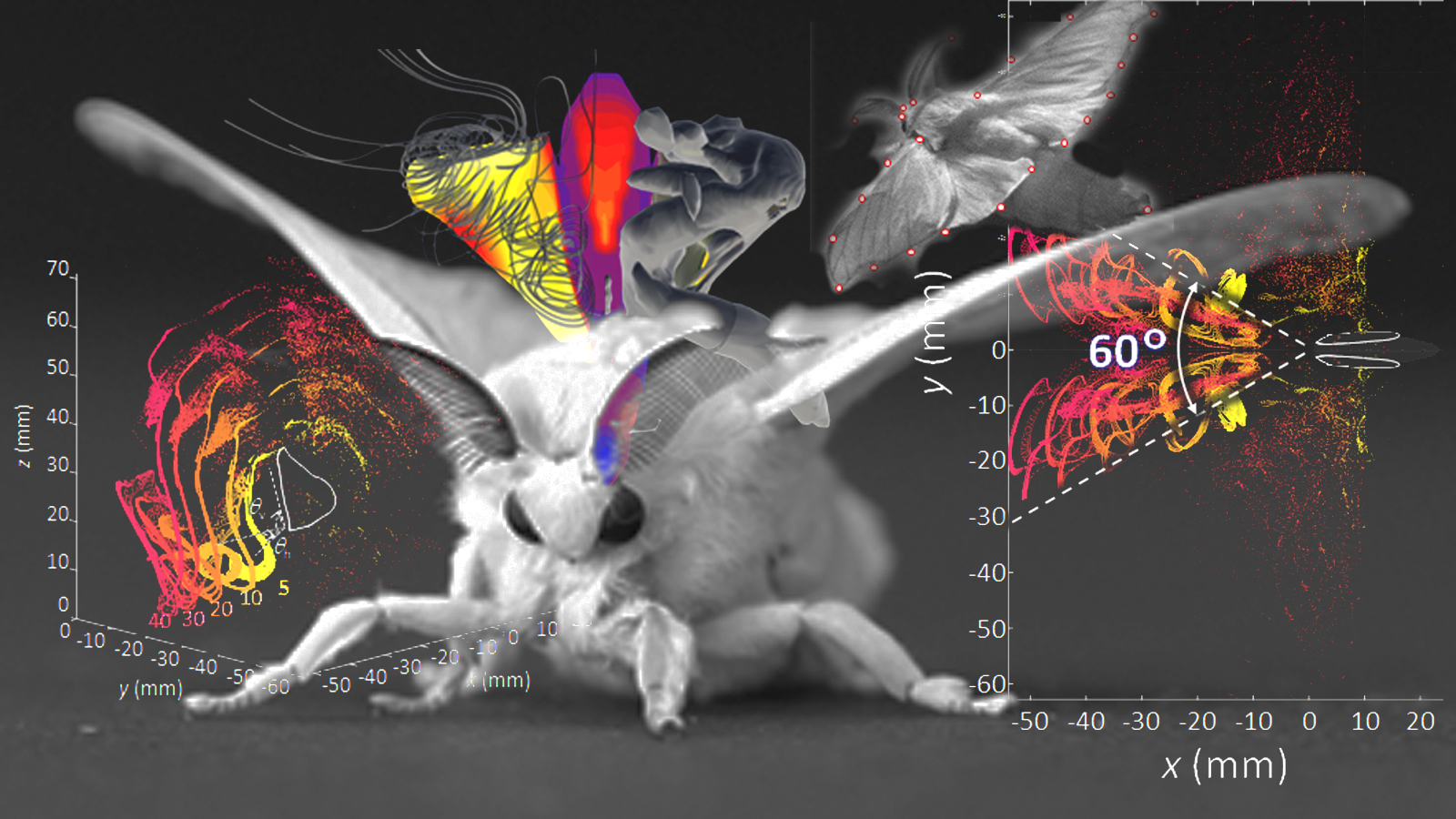Disaster Prevention and Reduction
Release date:April 24, 2025 10:16 AM
Faculty of Textile Science and TechnologyWing fanning of flightless silkworm moths beautifully guide pheromone molecules

Given their excellent ability to detect odors (pheromones), silkworm moths, long used as livestock, have been touted as an important model insect for olfactory research. However, the effect of wing fanning of the silkworm moth during mating behavior on pheromone detection remains unclear. A research group led by Associate Professor Daigo Terutsuki of the Shinshu University Academic Assembly (Institute of Textile Science and Technology) and Associate Professor Toshiyuki Nakata of the Graduate School of Engineering, Chiba University, elucidated the mechanism used by silkworm moths to induce airflow by fanning their wings. The findings of this study, which have provided new insight into insect odor searching behavior (*1), could serve as design guidelines for odor source-searching robots, a research area the team has focused on for some time.
The mechanism of airflow induction in the odor searching behavior of silkworm moths
Male silkworm moths exhibit a simple odor searching behavior that involves fanning their wings while proceeding straight ahead and frequently turning in a zigzag pattern to locate the female. This behavior facilitates the detection of female sex pheromones with high sensitivity and selectivity using their antennae. Domesticated silkworm moths have lost the ability to fly; nevertheless, they continue to exhibit “wing fanning” behavior. Thus, it was hypothesized that wing fanning could be used to locate the source of an odor. However, the three-dimensional air movement caused by wing fanning, which guides the airflow toward the antennae, remains to be measured.
Computational fluid dynamics analysis (*2) clarifies the reality of airflow induction by wing fanning
Associate Professor Terutsuki and his team artificially released pheromones using a small fan and used a high-speed camera to film male silkworm moths detecting the pheromones and fanning their wings. A silkworm moth movement model was reconstructed on a computer. Computational fluid dynamics (CFD) analysis performed subsequently revealed that wing fanning draws air currents into the antennae at a velocity of approximately 0.3 m/s. Furthermore, male silkworm moths selectively guided air currents to their antennae within a 60° forward range. These findings indicate that this airflow induction facilitates highly sensitive pheromone detection and efficient odor searching.
Great contribution to the development of odor-detecting flying robots
Associate Professor Terutsuki and his team developed an odor-detecting flying robot (bio-hybrid drone) (*3) that combines the antennae of an insect with a drone to locate the source of odors. These robots will facilitate the early detection of individuals in need of rescue at disaster relief sites. This study revealed that silkworm moths induce airflow by fanning their wings. These findings will enable the development of the abovementioned odor-detecting flying robot and robots that can rapidly detect the sources of odor in times of disasters.
Points
The mechanism through which silkworm moths induce airflow by fanning their wings remains unclear
This study is the first to shed light on the details of the induction of airflow through wing fanning
The findings of this study will facilitate the development of odor-detecting flying robots that can locate people in need of rescue at disaster sites
Keywords
- *1 Odor-searching behavior
A behavior exhibited by insects and other organisms to reach a target odor source.
- *2 CFD analysis
A technology that simulates the flow field around the subject to be analyzed by solving the equations of fluid motion and continuity on a computer.
- *3 Odor-detecting flying robot
An insect-machine hybrid drone that combines insect antennae (e.g., silkworm moth) with a small drone. It is also known as a bio-hybrid drone.
Paper
Journal:Scientific Reports (Springer Nature). 14, 17879, 2024.
Title:Olfactory sampling volume for pheromone capture by wing fanning of silkworm moth: a simulation-based study
Author:Toshiyuki Nakata*, Daigo Terutsuki*, Chihiro Fukui, Tomoya Uchida, Kohei Kanzaki, Taito Koeda, Sakito Koizumi, Yuta Murayama, Ryohei Kanzaki and Hao Liu
*Double first and corresponding authors(Co-first author & corresponding author)
Related Topics
Related Topics
